Chinese vegetables, sometimes called Oriental vegetables, favored in Chinese and Asian cooking are easy to grow. They are tasty, vigorous, and highly adaptable. Most are fast-growing and suitable for small gardens and containers.
Chinese vegetables can generally be broken into three groups: those easy to grow in temperate regions with cool and cold winters, those that require higher temperatures and long-growing seasons–sub-tropical plants, and, finally, a small group of water vegetables, tubers, and herbs. The crops listed here are well-suited for growing in the temperate regions of the Northern Hemisphere.
Like other vegetable crops, Chinese vegetables can be divided into warm-season and cool-season growing crops.
These crops are favored in Chinese and Asian cooking, and they are easy to grow. Most are fast-growing and suitable for small gardens and containers.
Good Products for Raised Bed Growing at Amazon:
- Galvanized Raised Bed 8×3
- Cedar Raised Bed 4×8
- Elevated Cedar Planter 4×2
- Walk-In Greenhouse Tunnel 15x7x7
- Row Cover for Freeze Protection 10×30
Warm-season Chinese vegetables
Many Chinese vegetables–also known as Oriental vegetables– are well suited for warm-season growing. Grow these crops from spring through the end of summer.
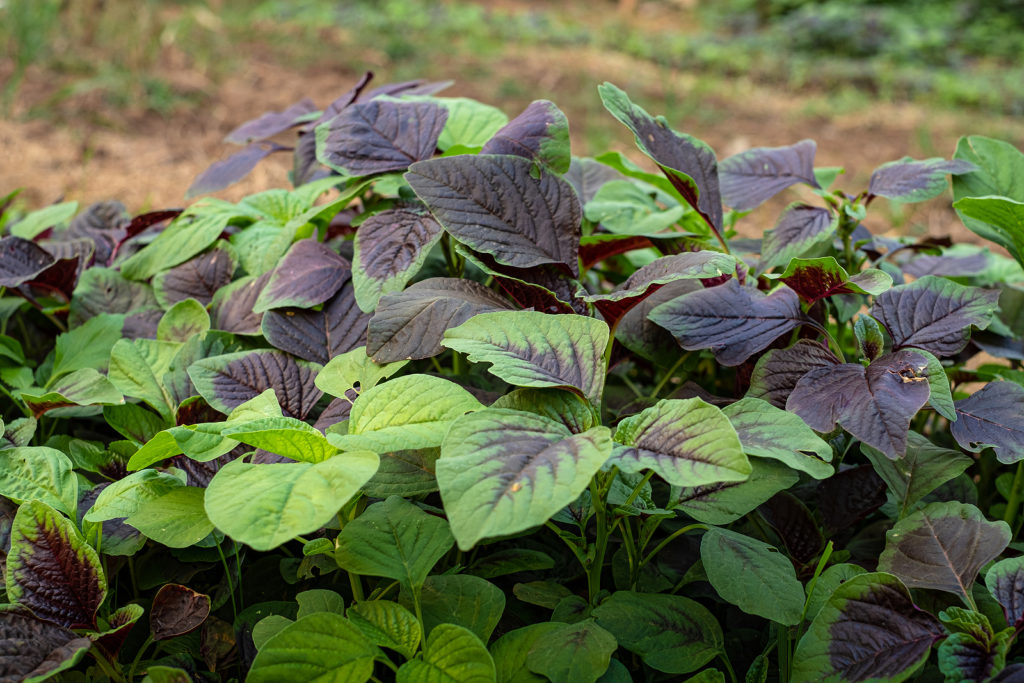
Vegetable amaranth
Vegetable amaranth (Amaranthus hypochondriacus for seed/ Amaranthus tricolor for leaf). Amaranthus tricolor also known as Chinese spinach, edible amaranth, hiyu, and callaloo. Cook greens like spinach. Sow in spring; can be grown in summer. Sensitive to frost; germinates best in warm soil. Sow ¼ inch, row 18 inches apart. Greens ready in 50 days; 100 days for seed. Try varieties: ‘Red Stripe Leaf’, ‘Tender Leaf’, and ‘All Red’.
Arrowhead
Arrowhead (Sagittaria sagittifolia) is also called Chinese arrowhead, swamp potato, and kuwai. The tubers of arrowhead are eaten; bitter when raw but full-flavored like a nutty sweet potato when cooked. Roast, or boil like a potato. Best grown in boggy soil set about 3 to 6 inches below the surface of the water; leave room for roots to grow. Harvest tubers all season long. Store for winter in a water garden that will not freeze.
Adzuki bean
Adzuki bean (Vigna angularis) is also known as aduki bean or red beans and in Japan as azuki. A sweeter flavor than most beans. Young beans can be served like snow peas after brief cooking. Puree after simmering dry beans. Cook dried beans like navy beans–just simmer for about 40 minutes until tender. Sow ½ inch deep; sow 2 to 3 inches apart in rows 24 inches apart; no need to thin. For green beans harvest when beans just begin to show in the pod; for dried beans allow to mature, for about 120 days.
Mung bean
Mung bean (Vigna radiae) is also called Chinese green bean and known in India as green gram or golden gram. Not commonly grown in home gardens; mung beans are easy to sprout and often used for sprouting. Young pods can be eaten like snow peas; shelled beans can be boiled. Sow when the danger of frost is past. Sow ½ inch deep and 6 to 8 inches apart in rows 24 inches apart. Grow on a pole, fence, or trellis. Harvest immature pods to eat in pods after 90 days; for dried beans, let bean pods dry on the plant and harvest at 120 days. Varieties: look for green or golden.
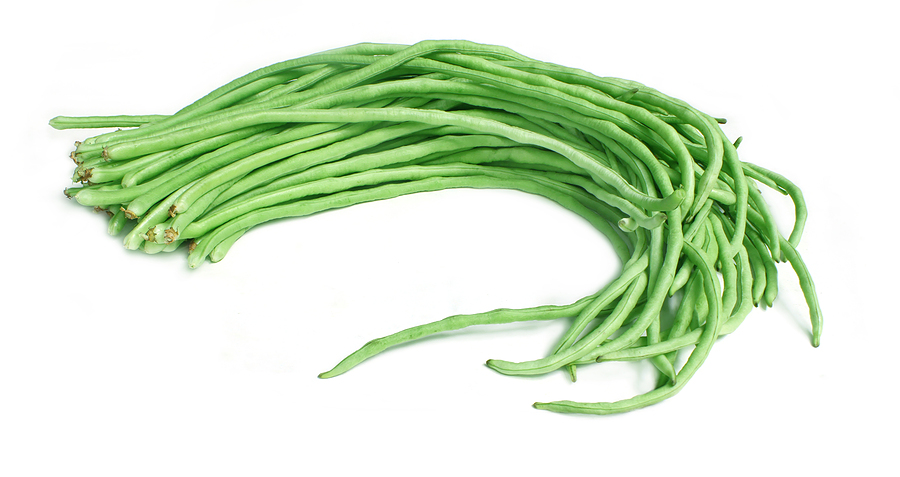
Yard-long bean
Yard-long bean (Vigna unguiculata ssp. sesquipedalis) is also called asparagus bean and Chinese long bean, Green beans can be boiled briefly and served; also use in stir-fry. Beans can also be dried. Plant when the soil has warmed in spring and no danger of frost. Sow seed ½ inch deep, allow 4 inches between plants. Grow on poles or on teepees. Best harvested when immature when the bean has barely swollen in the pod. For dry beans harvest about 90 days after sowing. Try varieties: ‘3-Feet Plus’, ‘Chinese Red Noodle Beans’, and ‘Canton White Pod’.
Water chestnut
Water chestnuts (Eleocharis dulcis) are not nuts but edible roots grown in rich very wet soil; the “chestnuts” form in the mud at the base of stems and are about the size of a walnut. Used for their nutty flavor and crispness. Eat raw or cooked, added at the end of cooking. Slice thin for salads, stir-fry, or add to soup. Grow in soil immersed about three inches below water level. Water chestnuts mature in about six months but can be gathered sooner. Store roots out of water in a cool, moist place where they won’t freeze.
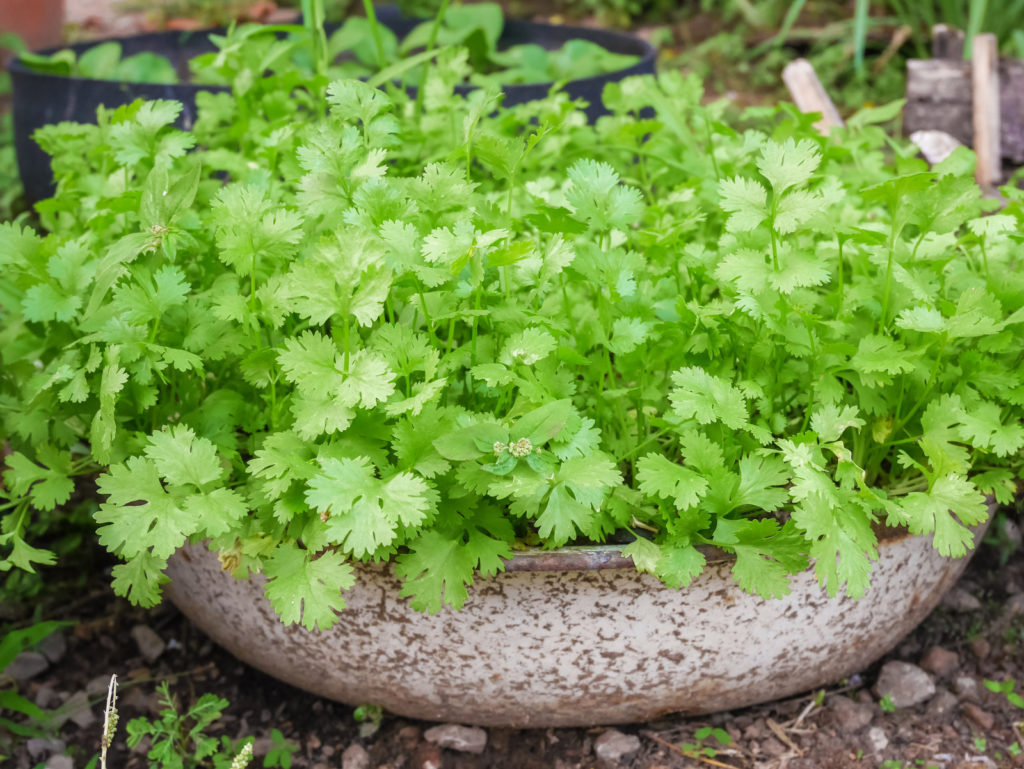
Cilantro
Cilantro (Coriandrum sativum). Fresh leaves tender and young will add zest to salads and also can be minced and sprinkled. Use cilantro at the end of the cooking cycle in stews or soups. The seed–called coriander–has a spicy citrus-orange flavor; use to flavor breads, puddings, and pastries. Sow seed from early spring through late summer. Barely cover seeds with soil; thin to 6 inches apart; sow successively for fresh cuttings. Leaves are ready for harvest in 50 days, and seeds in 90 to 100 or more days. Try varieties: ‘Asia Choice’, ‘Glory TW’, and ‘Slow Bolt Winner’.
Asian cucumber
Asian cucumber (Cucumis sativus) is also called Chinese cucumber or long cucumber; or burpless cucumber. Served sliced and marinated, stuffed, sautéed, or cooked with other vegetables and meats. Sow when the ground is warm in spring. Sow seed ½ inch deep, thin to 12 inches apart. Grow on a trellis or fence. Harvest frequently, daily is best. Harvest 60 days after sowing. Try varieties: ‘Hybrid Crisp Winner’, ‘Hybrid Malai’, and ‘Hybrid White Star’.’
Daylily
Daylily (Hemerocallis fulva) flower buds are eaten fresh and dried, sometimes served as “golden needles.” Buds are cut into lengths to serve with meat and vegetables; stir-fry or cook tempura-style. Daylilies grow from fleshy tuberous roots. To plant, set fleshy roots just below soil level, dig in compost, and water well. Harvest buds when they are plump but before they open. Fleshy roots and young leaves can also be eaten. Varieties: look for Hemerocallis fulva and Lilium lancifolium.
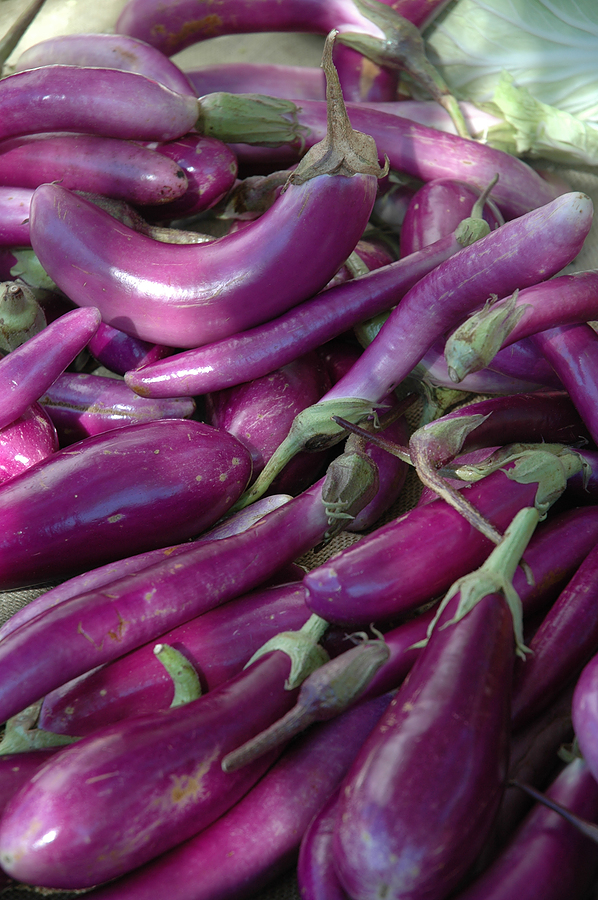
Chinese eggplant
Chinese eggplant (Solanum melongena). Also called aubergine. Asian eggplant is not bitter and does not need peeling. Serve fried, baked, or roasted or stuffed and roasted; also can be pickled. Eggplants require a long, warm season; usually started indoors a month before setting out; do not set out until the weather is warm and settled at least two weeks after the last frost. Sow ½ inch deep. Requires side-dress feeding and regular, deep watering during the season. Ready for harvest 60 to 75 days after transplanting into the garden; best picked immature when skin is glossy and smooth. Try varieties: ‘Ping Tung’, ‘Hybrid Purple Excel’, and ‘Ma-Zu Purple’.
Ginger
Ginger (Zingiber officinale) is grown as a spice: use ginger root with main dishes and desserts, salads, or stews. Ginger adds zest to many meat dishes; it eliminates fishy odors or seafood. Best started from root indoors and planted outdoors in late spring when all danger of frost has passed. Start new planting from a clean root cut into 1- to 2-inch pieces with at least one “eye” per section. Plant 2 inches deep in a 6-inch pot. The plant will develop numerous reedy shoots. Harvest shoots anytime after the plant is 3 inches high. Harvest immature, rosy-pink roots as “green ginger” in three to four months. Mature roots can be dug up after the plan has died back.
Fuzzy gourd
Fuzzy gourd (Benincasa hispida var. chieh-gua). The outside coat is fuzzy like a peach and must be removed. Also called hairy melon, hairy gourd, and hairy cucumber. Eaten like a vegetable rather than a fruit; use in the same ways as yellow summer squash and zucchini for soup, bread, casseroles, and stir-frying. Sow seed 1 inch deep, 2 inches apart next to a pole or trellis; must be staked so fruits hang. Harvest in 75 to 80 days. Try varieties: ‘Severn Star Long’, ‘Chiang Shin Joker’, ‘Fuzzy Star RF1 Hybrid’.
Chinese lotus
Chinese lotus (Nelumbo nucifera) also called Chinese lotus or sacred lotus, is different from the Egyptian lotus (Nymphaea lotus) or water lily. All parts of the Chinese lotus are edible raw or cooked. Add leaves to salad, add petals to cold soup, or use as salad garnish; add sliced roots to other vegetables raw or dip in batter and fry as tempura. Grow from a rhizome in full sun; set rhizome in horizontal position sprouts will point upward at a slight angle. A single plant requires a 25-gallon container and will grow to fill space. Set the root in a pot with from 6 to 10 inches of warm water above the soil line. Once planted keep in warm, not cold, water. Growing season is from late spring to early autumn. Buds, flowers, and seedpods all come to harvest at the same time. The root can grow to 4 feet and can be harvested in segments; break apart roots to store in winter. Store in winter where roots will not freeze.
Luffa
Luffa (Luffa acutangula, L. cylindrical). The leaves and flower buds are edible when young; the fruit is edible when immature. Prepare the fruit like zucchini: simmer, stir-fry, and stuff. Sow after the soil warms in spring; luffa requires a long, warm season of 115 days from sowing to harvest. Sow 1 inch deep; sow two or three seeds every 3 feet and thin to the strongest plant. Side-dress with an all-purpose fertilizer every three weeks and keep well watered. Ready for picking when gourds are 4 to 6 inches long. Try varieties: L. acutangula: ‘Summer Long’, ‘Hybrid Green Glory’; for L. cylindrical: ‘Hybrid Summer Cross’, ‘Hybrid Smooth Beauty’, ‘Southern Winner’.
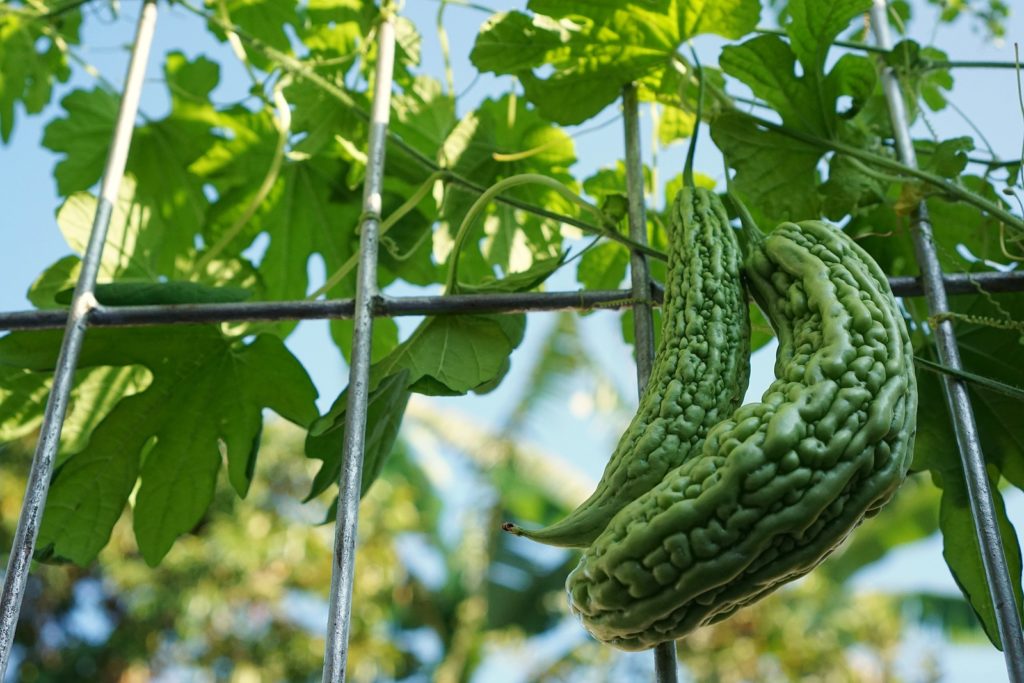
Bitter melon
Bitter melon (Momordica charantia). Also called bitter gourd, balsam pear, and kerala. This is a fruit eaten as a vegetable. Young leaves can be steamed as greens. Stir-fry or stuff and cook. Sow when the danger of frost is past and the soil has warmed. Grows best on a fence or trellis. Sow seed 1 inch deep, 6 to 8 inches apart. Side-dress with fish emulsion every three weeks and keep well watered. Pick when fruits are no longer than 6 inches otherwise the flavor will be bitter. Try varieties: ‘Taiwan Large’, ‘Hong Kong Green’, and ‘Hybrid White Pearl’.
Pickling melon
Pickling melon (Cucumis melon Conomon Group). Use any standard pickle recipe to make sweet or sour pickles, which will be ready in a week refrigerated or three months in salt, vinegar, and sugar with chilis. Sow when the danger of frost is past. Sow ½ inch deep, 4 inches apart, and thin to 8 inches apart. Spreading vine can be grown on a trellis. Harvest in 65 days. Try varieties: ‘Green Striped’, ‘Shimauri Stripe’, and ‘Numame Early’.
Sweet melon
Sweet melon (Cucumis melo). Similar to but better tasting than honeydews and cantaloupes. Use in desserts and fruit salads; very sweet and fragrant. All melons require a long, very warm growing season. Sow when the soil has warmed in spring; sow in hills of rich soil; four seeds per hill, hills spaced 4 feet apart. Support fruits off the ground if possible. Harvest 115 to 130 days from sowing. Try these varieties: ‘Hybrid Gold Sweet’, ‘Hybrid Jade King’, and ‘Hybrid Golden Liner’.
Winter melon
Winter melon (Benincasa hispida). Also called white or wax gourd. Use in stir-fries or in seafood curries and often pickled and prepared like pickled watermelon rind. A large oblong or round melon requires a long, very warm growing season of about 150 days. Sow seed 1 inch deep and 10 inches apart. Try varieties: ‘Hybrid Wonder Wax’, ‘Round Tong Gwa’, and ‘Hybrid Small Round’.
Hot pepper
Hot pepper (Capsicum frutescens). Hot peppers unlike sweet peppers are not eaten as a vegetable rather they are added to cookery as a seasoning or herb. Grow in the warm season; peppers will not tolerate frost. Sow seeds ½ inch deep in a shallow container to grow on for transplanting out to the garden. Sturdy seedlings can go to the garden after the weather and soil have warmed. Space plants 18 to 24 inches apart in rows 24 inches apart. Peppers can be harvested at almost any stage; color indicated the age of a pepper–green or yellow is early, orange is maturing, and red is mature. Allow 65 to 85 days from transplanting for harvest. Try varieties: ‘Chi-Chien’, ‘Hybrid Golden Hot’, and ‘Goat Horn’.
Chinese pumpkin
Chinese pumpkin (Cucurbita maxima, C. moschata). Also called Oriental pumpkin, Oriental squash, Asian squash, kabocha. Like winter squash use Chinese pumpkin in soups, pies, pureed, baked, or fried. Start indoors 4 weeks before the soil warms or sow in place in long, warm growing season regions. Grow in hills near trellis or support. Sow 1 inch deep, three to four feet apart. Require constant moisture. Harvest in 130 days. Try varieties: ‘Asian Gold’, ‘Hybrid Papaya Golden’, and ‘Hybrid Sunday Sweet’.
Sesame
Sesame (Sesamium indicum). Grow sesame for seed to be used as a snack, as a garnish, add to stir-fry dishes, or press into the crust of pies. Seeds can be toasted in oil to add flavor. Sow plants in spring after the soil has warmed; require a long growing season of 90 to 150 days. Sow seed ½ inch deep and 1 inch apart; thin plants to 3 feet apart. Seedpods burst when ripe, but not all pods burst at the same time. Harvest before leaves and stems start to turn color; begin harvest when bottom seeds begin to turn tan: cut the whole plants and hang them upside down in a paper bag. Try varieties: ‘Black Seed’, and ‘White Seed’.
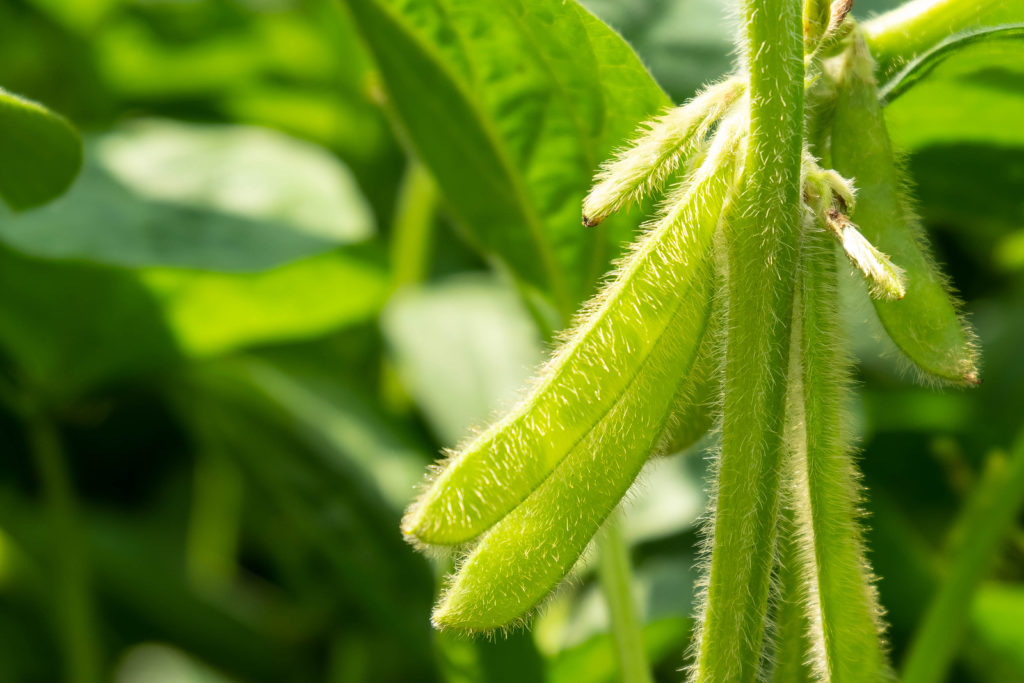
Soybean
Soybean (Glycine max). Eat as a green vegetable, the Japanese name is edamame, or as a dry bean. A source of soy milk and cheese. Soy sauce is made from fermented soybeans. Green soybeans can be cooked in their pods until tender for edamame; shelled green soybeans have a mild, nutty flavor. Soybean sprouts can be used as a fresh vegetable in winter. Sow after the soil has warmed in spring. Sow 1½ inches deep, 5 inches apart, in rows 24 inches apart. Harvest 75 days after sowing for green beans, and 115 days after sowing for dry beans. Try varieties: ‘Taiwame’, ‘Green Legend’, and ‘Late Giant Black Seeded’.
Violet-stemmed taro
Violet-stemmed taro (Colocasia esculenta ‘Fontanesii’). Also called black taro and black elephant ear. Violet-stemmed taro is grown mostly for its foliage in Western countries; in Asia plant is grown for its root. Use taro in any potato recipe usually baked; also peel, slice, and cook until tender and serve with dressing. Grow in a pot of soil immersed in water to about 4 inches from soil to water level; space roots in the pot evenly. Foliage will die back in the fall, harvest roots then. Store roots in winter at 32°F in a cool, moist place; do not let the roots dry out. Other varieties: green taro (Colocasia esculenta) also called dasheen.
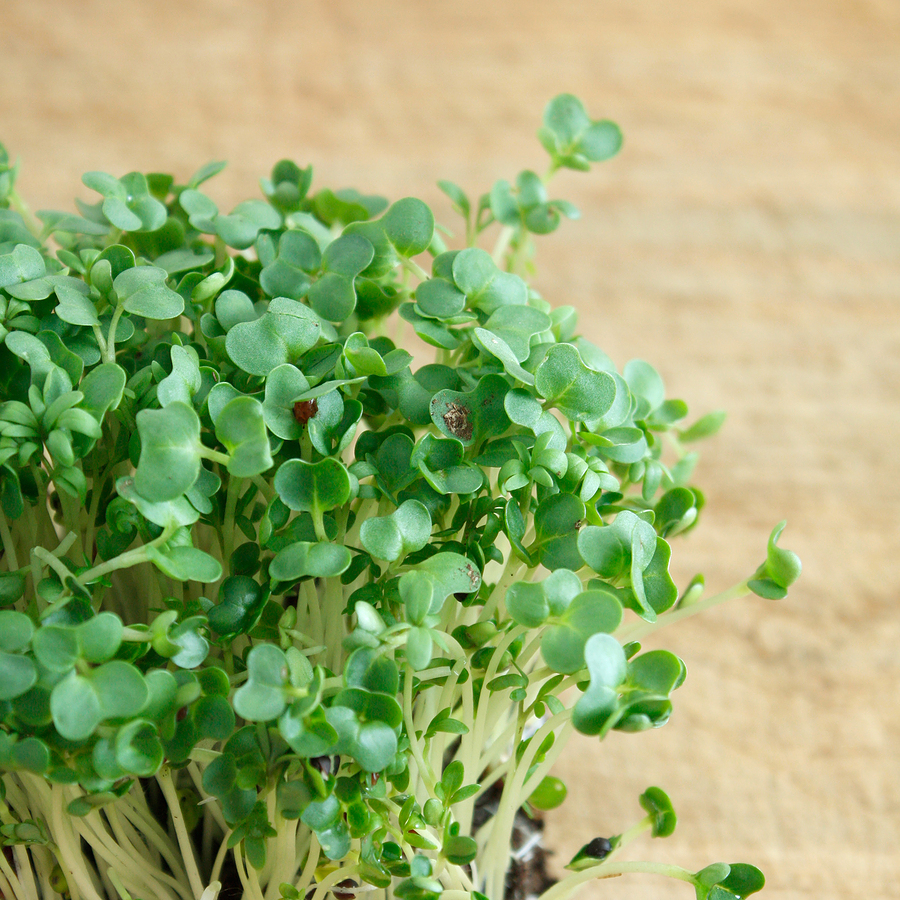
Watercress
Watercress (Nasturtium officinale). Use watercress in sandwiches, cream cheese, and yogurt; use as a garnish for hot or cold soup; add sprigs to mixed green salad; use in a stir-fry or in tempura. Start seed in early spring for best results. Requires wet feet–cool water. Grow from seeds or sprigs; root springs in freshwater. Just cover seeds with moist soil. Must stay moist through the growing cycle; grow in shade. Harvest whenever you like but before flowering; grow to maturity from seed in about 60 days; harvest as early as 10 days.
Cool-season Chinese vegetables
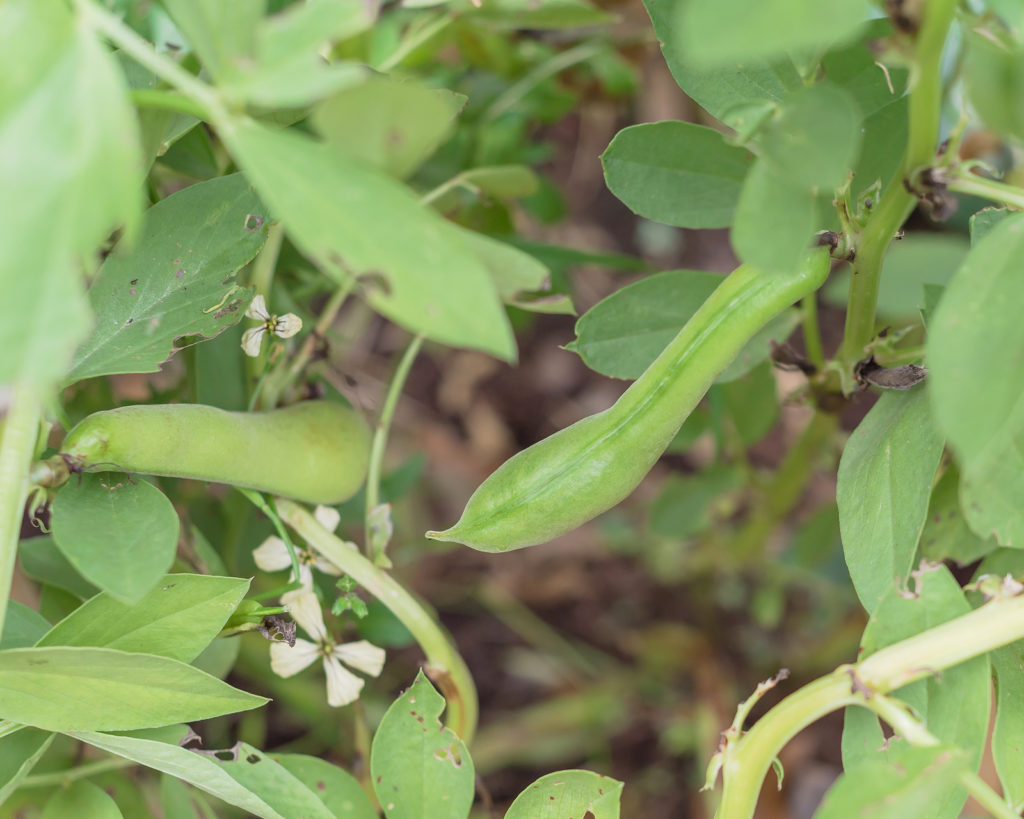
Fava bean
Fava bean (Vicia faba) is also called broad bean. Young pods can be cooked as you would snow peas; young beans can be shelled and cooked; older beans can be shelled and cooked to make a puree or soup; dried beans can be cooked like navy beans. Sow in spring as soon as the soil can be worked; in warm-winter regions sow in fall for a spring crop. Sow 1 inch deep, 4 to 6 inches apart in rows 24 inches apart. For edible pods harvest as soon as pods begin to show an outline of bean; for shelled beans allow beans to plump up; for dried beans harvest 65 to 90 days after sowing. Try varieties: ‘Aquadulce’, ‘Broad Windsor’, and ‘Precoce Violetto’.
Chinese broccoli
Chinese broccoli (Brassica oleracea Albogloabra Group) is also called white flowering broccoli. Traditional style cut the broccoli into 2-inch pieces and stir-fry for 1 minute. Also stir-fry or steam; leaves can be used in salad. Sow in early spring for a late-spring crop. Sow ½ inch deep and 1 inch apart in rows 12 inches apart. Harvest 70 to 80 days after sowing. Try varieties: ‘Thick Stem Winner’, ‘Blue Star’, ‘Hybrid Blue Wonder’.
Burdock
Burdock (Arctium lappa) is also known as gobo, the Japanese name. Young leaves and stems can be eaten like spinach and asparagus, but the long, slender root is best known. Eat roots young and peeled like a radish; the mature root is peeled and soaked in salted water and parboiled. Plant in early spring for a fall crop or winter over for an early spring crop. Soak seed and then plant ½ to 1 inch deep, 6 inches apart, in rows 20 inches apart. Harvest in as little as 45 days, but can stay in the ground longer until roots are 2 to 3 feet long. Varieties: Grow only A. lappa: try ‘Takinogawa Long’, ‘Watanabe’.
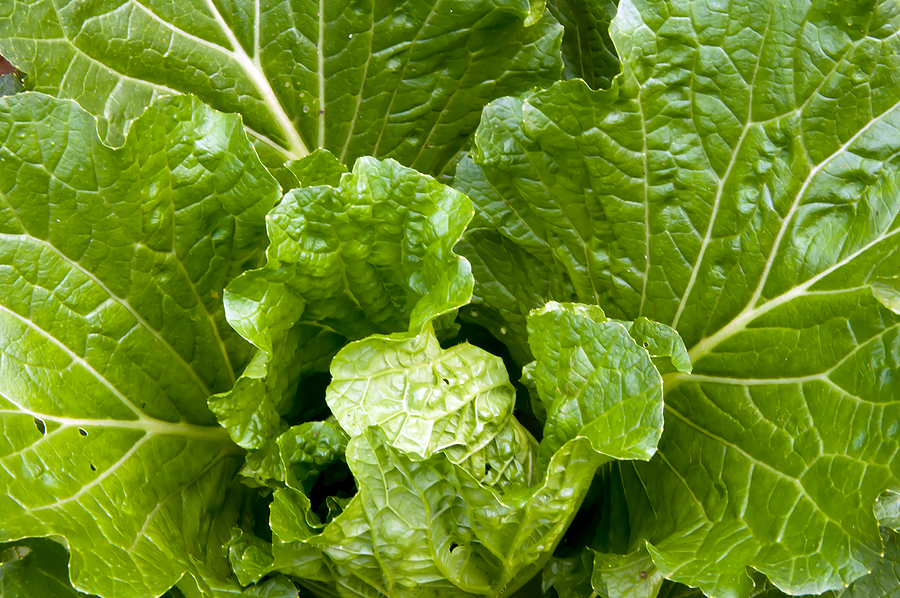
Chinese cabbage
Chinese cabbage (Brassica rapa Pekinensis Group) is also called napa cabbage, hakusai, Tianjin cabbage, Michihili, and Chinese celery cabbage. Use in salads or stir-fry as you would ordinary cabbage. Plant mid-summer for fall crop; in spring plant bolt-resistant variety. Sow ½ inch deep, in inches between plants, thin to 18 inches apart in rows 18 to 30 inches apart. Harvest before heavy frost; ready for harvest 70 to 80 days after sowing. Try varieties: ‘Hybrid Super’, ‘Hybrid Hwa King WR60’, and ‘Michihili’.
Garland chrysanthemum
Garland chrysanthemum (Chrysanthemum coronarium) is also called shungiku or edible chrysanthemum, also called crown daisy. Eat raw with salad greens, but commonly cooked very briefly like spinach or last minute in a stir-fry. Sow in early spring and successively until early summer. Sow ¼ inch deep, 2 inches apart in rows 18 inches apart. Harvest in 25 to 60 days. Try varieties: ‘Small Leaf’, ‘Round Leaf’, and ‘Tiger Ear’.
Garlic
Garlic (Allium sativum) has a sharper flavor than elephant garlic. For cooking, peel whole cloves before using; crush and remove from the dish before serving; cook lightly in a bit of oil to distribute flavor to other ingredients. Garlic cloves are planted in late fall or in early spring; plant larger cloves for best results. Separate garlic bulbs into individual cloves and plant ½ inch deep, 6 inches apart in rows 8 inches apart. Grows best in cool temperatures where days are long. Cloves mature in 6 to 8 months; harvest when the tops turn brown and dry; allow bulbs to dry in the sun or a day or two after harvest.

Garlic chives
Garlic chives (Allium tuberosum). Differs from common chives with garlic instead of onion flavor; the flowers are white instead of lavender. Use as you would common chives: mince for salads, sprinkle as a garnish, or add to cooked dishes for zesty flavor. Bulbs can be eaten like garlic or shallots. Grow indoors as a potherb. Or grow outside as a permanent clump. Usually started from transplants set 12 inches apart in rows 20 inches apart. Dig and divide clumps to start a new colony. Harvest leaves when they are about 6 inches long from 25 to 60 or more days after starting; cut shoots to within 2 inches of the ground. Don’t let the flowers go to seed
Elephant garlic
Elephant garlic (Allium ampeloprasum). Elephant garlic is a milder flavor than common garlic; it is a bigger version of ordinary garlic. For cooking, peel whole cloves before using; crush and remove from the dish before serving; cook lightly in a bit of oil to distribute flavor to other ingredients. Garlic cloves are planted in late fall or in early spring; plant larger cloves for best results. Separate garlic bulbs into individual cloves and plant ½ inch deep, 6 inches apart in rows 8 inches apart. Grows best in cool temperatures where days are long. Cloves mature in 6 to 8 months; harvest when the tops turn brown and dry; allow bulbs to dry in the sun or a day or two after harvest.
Flowering kale
Flowering kale (Brassica oleracea Acephala Group) is often sold as ornamental kale or ornamental cabbage. Use like other kale or cabbage; shred, boil, bake, or stuff. Sow ½ inch deep 8 inches apart in rows 16 inches apart. Grow like common cabbage. Harvest when heads are loosely formed as early as 55 days.
Mitsuba
Mitsuba (Cryptotaenia canadensis ssp. japonica). Often called Japanese parsley. Use leaves as you would Italian parsley in mixed green salads, simmer in broth, stir-fry, or mince, and add to cooked vegetables. Sow as early as the ground can be worked in spring; can be grown in a pot indoors in winter. Sow seed ½ inch deep, 2 inches apart, and thin to 4 inches apart. Sow successively every three weeks for continuous harvest. Leaves are ready for harvest in 60 to 90 days.
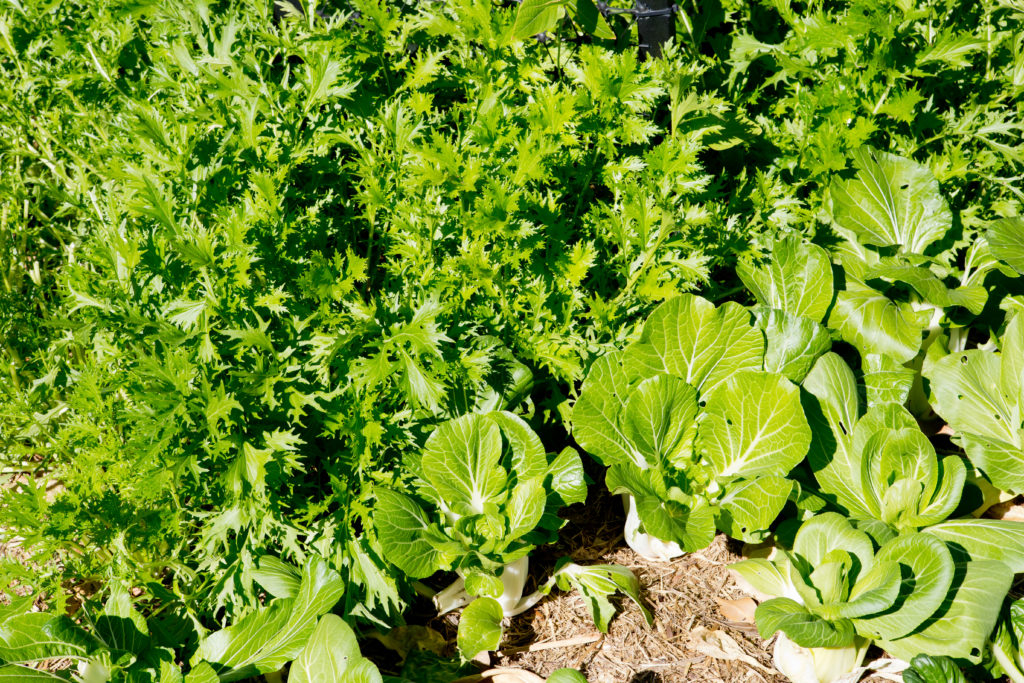
Mizuna
Mizuna (Brassica napa nipposinica) is also called Chinese potherb mustard or Japanese salad green. Steam or stir-fry at the last minute or use in mixed green or tossed salad. Grow from early spring until hard frost; does not go to seed in hot weather. Sow 2 inches apart at ½ inch deep in rows 18 inches apart. Harvest from seed in 35 to 40 days.
Chinese mustard
Chinese mustard (Brassica juncea). Chinese mustard greens are among the most delicious greens; come in many forms; use in salads or cook like spinach. Sow in early spring and again from late summer until the first frost; the flavor is peppery in summer. Sow seeds ¾ inches deep in rows 12 inches apart. Harvest from seed in 35 to 50 days. Try varieties: ‘Bau-Sin’, ‘San-Ho Giant’, and ‘Red Giant’.
Bunching onions
Bunching onions (Allium fistulosum) are also called Japanese leek, nebuka, scallion, spring onion, multiplier onion, green onion, and Welsh onion. Use bunching onions as you would scallions–as a garnish, in stir-fry, and they are mild enough to eat raw. Braise after cutting in half vertically. Sow seed in early spring for summer use and in mid-summer for fall or early spring use. Sow ½ inch deep and 2 inches apart. Ready for harvest in about 65 days. Try varieties: ‘Evergreen’, ‘Red Beard’, and ‘Four Season’.
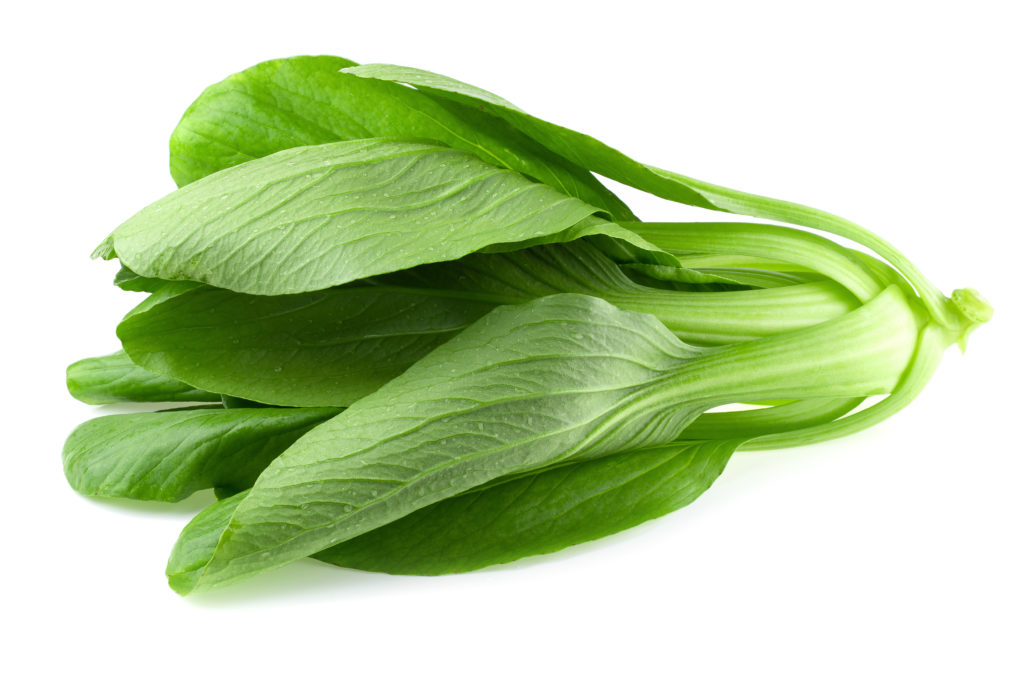
Pak choy
Pak choy (Brassica rapa Chinensis Group). Cook Pak choy leaves like spinach; cook stems or ribs like asparagus. Use in stir-fry and soups. Sow in early spring or later summer; extend fall crop by harvesting outer leaves. Can be harvested whole very small. Sow seed ¼ inch deep about 2 inches apart in rows 18 inches apart; thin to about 6 inches apart. Grow quickly with even, regular watering. Ready for harvest in about 45 days, or clop outside leaves earlier. Try varieties: ‘Long White Petiole’, ‘Short White Petiole’, ‘Canton Choice’.
Asparagus pea
Asparagus pea (Psophocarpus tetragonolobus). The whole plant is edible: leaves, shoots, flowers, and roots. Stir-fry pods or add to soups and stews. Add shoots, leaves, and flowers to soups and curries. This plant is not frost tender; sow in the garden a couple of weeks before the last frost–start early. Sow seed ½ inch deep, 6 inches apart in rows 18 inches apart. Sow fall crop in mid-to late summer. Harvest in 50 days.

Snow pea
Snow pea (Pisum sativum var. macrocarpon) is also called edible-podded peas. Use in soups, meat dishes, stir-fry dishes, and sukiyaki. Combines well with fish and other vegetables; just remove ends and cook quickly. Sow in spring as soon as the soil can be worked as much as six weeks before the last frost. Sow for a fall crop in late summer. Sow in a 6-inch-deep trench; cover the first few inches of the stem as they grow to fill in the trench. Sow ½ inch deep and thin to 2 inches apart. Grow on supports–vines can reach 5 feet tall or more. Try varieties: ‘Mammoth Melting’, ‘Sugar’, ‘Oregon Sugar Pod II’, and ‘Premium’.
Chinese radish
Chinese radish (Raphanus sativus) can be eaten raw, grated, and served with Asian sesame oil or soy sauce. Cook in stir-fry and also can be pickled. Greens can be served young or steamed. Sow seed in spring, summer, or fall; sow ½ inch deep and 2 inches apart; thin in stages and eat thinnings. The time of harvest depends on if you grow for leave or roots; roots are ready for harvest in 60 to 80 days. Try varieties: ‘Ta-Mei-Hwa’, ‘Tsin-tao Green’, and ‘Nam Pan’.
Related articles:
How to Start a Vegetable Garden
Related articles:
How to Plant, Grow, and Harvest Chinese Cabbage
Five Ways to Cook and Serve Chinese Cabbage
Four Ways to Cook and Serve Napa Cabbage
Five Ways to Cook and Serve Bok Choy
How to Plant, Plant, Grow, and Harvest Mizuna
Ways to Prepare and Serve Mizuna
How to Cook and Serve Bitter Melon
Garden Planning Books at Amazon:
- Vegetable Garden Almanac & Planner
- Kitchen Garden Grower’s Guide Vegetable Encyclopedia
- Vegetable Garden Grower’s Guide
- Tomato Grower’s Answer Book















